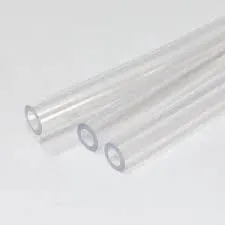ნოე . 29, 2024 15:31 Back to list
Exploring the Versatility and Applications of PVC Plate Materials in Various Industries
Understanding PVC Plates Versatility and Applications
Polyvinyl Chloride, commonly referred to as PVC, is one of the most widely used synthetic plastic polymers in the world. Among its various applications, PVC plates have gained significant popularity due to their unique properties and versatility. This article explores the characteristics, manufacturing process, advantages, and applications of PVC plates.
Characteristics of PVC Plates
PVC plates are known for their robust structure and durability. They possess several key characteristics
1. Lightweight One of the most significant advantages of PVC plates is their lightweight nature, which makes them easy to handle and transport.
2. Chemical Resistance PVC is resistant to a variety of chemicals, which makes it suitable for use in environments where exposure to corrosive substances is a concern.
3. Waterproof With its inherent water resistance, PVC plates are ideal for applications in humid environments or where moisture is a factor.
4. High Impact Strength PVC plates can withstand considerable force without cracking or breaking, making them suitable for a wide range of applications.
5. UV Resistance Many PVC plates come with UV inhibitors that prevent degradation from sunlight, extending their lifespan when used outdoors.
6. Versatile Finishing Options PVC plates can be easily colored, textured, or printed on, allowing for customization in design and aesthetics.
Manufacturing Process
The manufacturing of PVC plates typically involves a series of steps
1. Material Preparation PVC resin is mixed with various additives to enhance its properties, such as plasticizers, stabilizers, and colorants.
2. Thermoforming or Flat Sheet Extrusion The prepared mixture is then heated and formed into sheets either through thermoforming or by being extruded into flat sheets. During this process, careful control of temperature and pressure ensures the PVC achieves the desired thickness and surface finish.
3. Cooling After forming, the sheets are cooled to retain their shape.
4. Cutting and Finishing Once cooled, the plates are cut into specified sizes and undergo finishing processes to achieve the required surface texture or color.
pvc plate

Advantages of PVC Plates
The use of PVC plates offers several advantages that make them a preferred choice in various industries
1. Cost-Effectiveness Compared to other materials, PVC plates are relatively inexpensive, making them an economical choice for manufacturing and construction.
2. Ease of Fabrication PVC plates are easy to cut, shape, and join, allowing for quick assembly and installation.
3. Sustainability PVC is recyclable, and many manufacturers are adopting practices that reduce waste and energy consumption, contributing to a more sustainable future.
4. Low Maintenance PVC plates require minimal maintenance, as they are resistant to corrosion and do not need painting or sealing.
5. Safety PVC plates are flame-retardant and self-extinguishing, offering added safety in industrial and commercial applications.
Applications of PVC Plates
The versatility of PVC plates has led to their adoption across numerous industries
1. Signage Due to their durability and ease of customization, PVC plates are commonly used for outdoor and indoor signage, providing clear visibility and weather resistance.
2. Construction In the construction industry, PVC plates are utilized for wall coverings, ceiling panels, and cladding, offering an attractive and functional solution.
3. Display and Retail Retailers often use PVC plates for point-of-sale displays, shelf dividers, and product packaging, benefiting from their lightweight and durable properties.
4. Medical Applications In medical environments, PVC plates can be found in laboratory equipment and medical devices due to their easy-to-clean nature and resistance to chemical exposure.
5. Hobby and Crafting DIY enthusiasts appreciate PVC plates for crafting and projects, as they are easy to work with and can be painted or decorated easily.
Conclusion
PVC plates are an exemplary representation of how versatile materials can cater to a variety of needs across different sectors. Their unique characteristics, combined with manufacturing efficiency and cost-effectiveness, make them an ideal choice for anyone from industrial manufacturers to home DIYers. As industries continue to evolve and seek sustainable solutions, the importance of materials like PVC and their applications will undoubtedly grow.
-
PVC Transparent Sheet Roll - Durable & Flexible PVC Plastic Sheet Roll for Industrial & Home Use
NewsJun.24,2025
-
High-Quality PVC PPR Pipes and Fittings Durable ERA PPR Solutions
NewsJun.10,2025
-
High-Quality Large HDPE Sheets & Large Diameter PVC Pipe Durable Large PVC Pipe Supplier
NewsJun.10,2025
-
High Density Polyethylene Cutting Board - Durable & Food Safe
NewsJun.09,2025
-
3 Inch PVC Pipe for Durable Irrigation Affordable & Reliable
NewsJun.09,2025
-
Premium PPR Plastic Water Pipe Fittings - Durable & Leak-Free
NewsJun.09,2025

